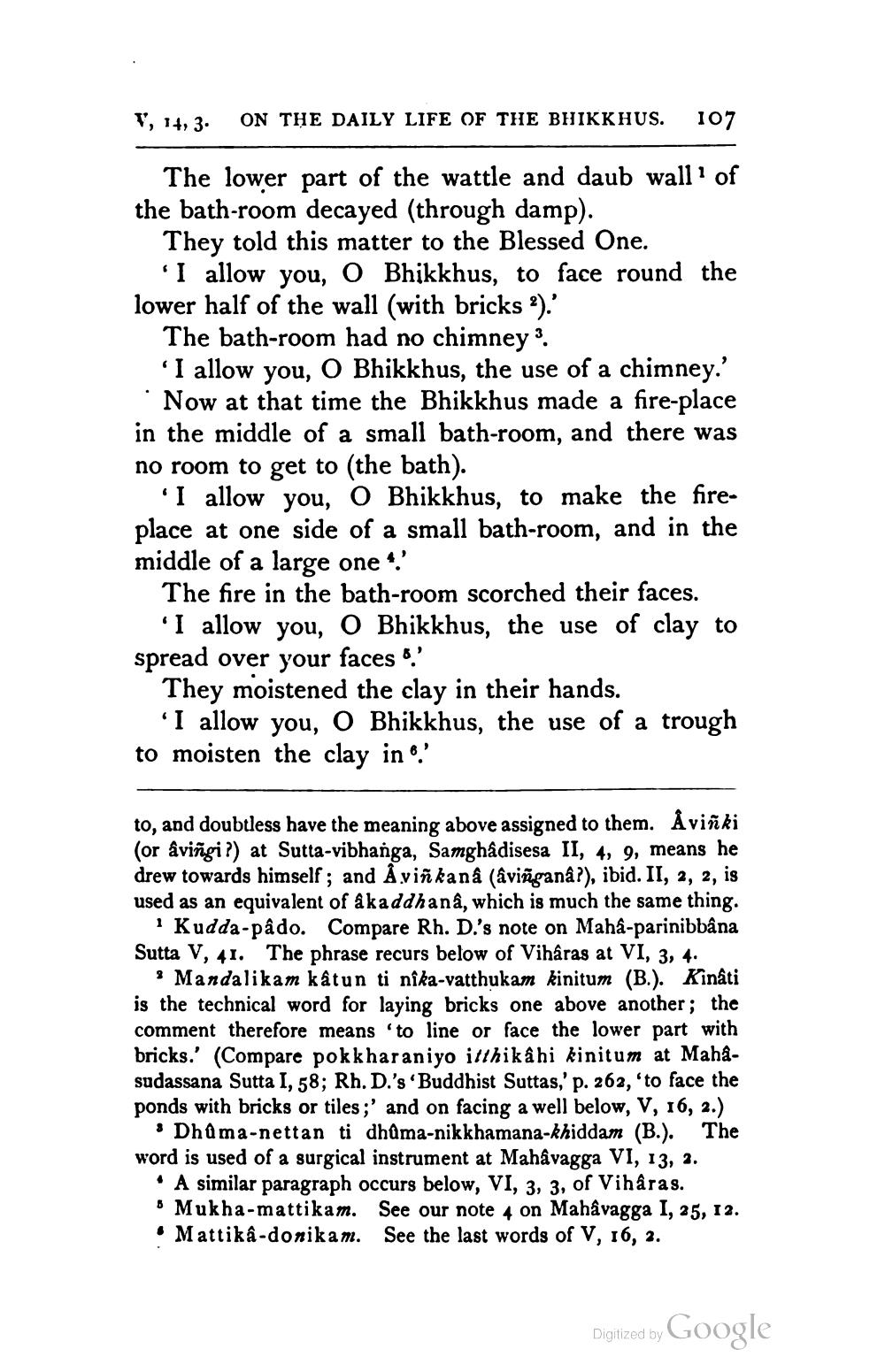________________
ON THE DAILY LIFE OF THE BHIKKHUS. 107
The lower part of the wattle and daub wall1 of the bath-room decayed (through damp).
They told this matter to the Blessed One.
V, 14, 3.
'I allow you, O Bhikkhus, to face round the lower half of the wall (with bricks").'
The bath-room had no chimney 3.
'I allow you, O Bhikkhus, the use of a chimney.' Now at that time the Bhikkhus made a fire-place in the middle of a small bath-room, and there was no room to get to (the bath).
'I allow you, O Bhikkhus, to make the fireplace at one side of a small bath-room, and in the middle of a large one'.'
The fire in the bath-room scorched their faces.
'I allow you, O Bhikkhus, the use of clay to spread over your faces ".'
They moistened the clay in their hands.
'I allow you, O Bhikkhus, the use of a trough to moisten the clay in ".'
to, and doubtless have the meaning above assigned to them. Avinki (or âvingi?) at Sutta-vibhanga, Samghâdisesa II, 4, 9, means he drew towards himself; and Aviñkanâ (âviñganâ?), ibid. II, 2, 2, is used as an equivalent of âkaddhanâ, which is much the same thing.
1 Kudda-pâdo. Compare Rh. D.'s note on Mahâ-parinibbâna Sutta V, 41. The phrase recurs below of Vihâras at VI, 3, 4.
'Mandalikam kâtun ti nîka-vatthukam kinitum (B.). Kinâti is the technical word for laying bricks one above another; the comment therefore means 'to line or face the lower part with bricks.' (Compare pokkharaniyo itthikâhi kinitum at Mahâsudassana Sutta I, 58; Rh. D.'s 'Buddhist Suttas,' p. 262, 'to face the ponds with bricks or tiles;' and on facing a well below, V, 16, 2.)
Dhuma-nettan ti dhûma-nikkhamana-khiddam (B.). The word is used of a surgical instrument at Mahâvagga VI, 13, 2.
⚫ A similar paragraph occurs below, VI, 3, 3, of Vihâras. Mukha-mattikam. See our note 4 on Mahâvagga I, 25, 12. Mattika-donikam. See the last words of V, 16, 2.
Digitized by Google




